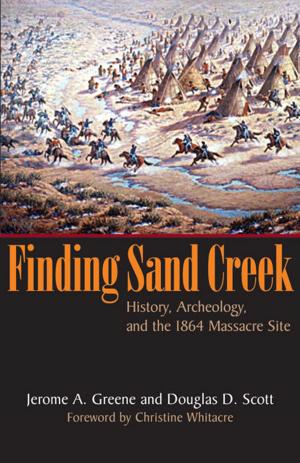Portrait of a Prospector
Edward Schieffelin's Own Story
Nonfiction, History, Americas, United States, 19th Century, Biography & Memoir| Author: | Edward Schieffelin | ISBN: | 9780806161488 |
| Publisher: | University of Oklahoma Press | Publication: | November 9, 2017 |
| Imprint: | University of Oklahoma Press | Language: | English |
| Author: | Edward Schieffelin |
| ISBN: | 9780806161488 |
| Publisher: | University of Oklahoma Press |
| Publication: | November 9, 2017 |
| Imprint: | University of Oklahoma Press |
| Language: | English |
Edward “Ed” Schieffelin (1847–1897) was the epitome of the American frontiersman. A former Indian scout, he discovered what would become known as the legendary Tombstone, Arizona, silver lode in 1877. His search for wealth followed a path well-trod by thousands who journeyed west in the mid to late nineteenth century to try their luck in mining country. But unlike typical prospectors who spent decades futilely panning for gold, Schieffelin led an epic life of wealth and adventure. In Portrait of a Prospector, historian R. Bruce Craig pieces together the colorful memoirs and oral histories of this singular individual to tell Schieffelin’s story in his own words.
Craig places the prospector’s family background and times into context in an engaging introduction, then opens Schieffelin’s story with the frontiersman’s accounts of his first prospecting attempts at ten years old, his flight from home at twelve to search for gold, and his initial wanderings in California, Nevada, and Utah. In direct, unsentimental prose, Schieffelin describes his expedition into Arizona Territory, where army scouts assured him that he “would find no rock . . . but his own tombstone.”
Unlike many prospectors who simply panned for gold, Schieffelin took on wealthy partners who invested the enormous funds needed for hard rock mining. He and his co-investors in the Tombstone claim became millionaires. Restless in his newfound life of wealth and leisure, Schieffelin soon returned to exploration. Upon his early death in Oregon he left behind a new strike, the location of which remains a mystery.
Collecting the words of an exceptional figure who embodied the western frontier, Craig offers readers insight into the mentality of prospector-adventurers during an age of discovery and of limitless potential.
Portrait of a Prospector is highly recommended for undergraduate western history survey courses.
Edward “Ed” Schieffelin (1847–1897) was the epitome of the American frontiersman. A former Indian scout, he discovered what would become known as the legendary Tombstone, Arizona, silver lode in 1877. His search for wealth followed a path well-trod by thousands who journeyed west in the mid to late nineteenth century to try their luck in mining country. But unlike typical prospectors who spent decades futilely panning for gold, Schieffelin led an epic life of wealth and adventure. In Portrait of a Prospector, historian R. Bruce Craig pieces together the colorful memoirs and oral histories of this singular individual to tell Schieffelin’s story in his own words.
Craig places the prospector’s family background and times into context in an engaging introduction, then opens Schieffelin’s story with the frontiersman’s accounts of his first prospecting attempts at ten years old, his flight from home at twelve to search for gold, and his initial wanderings in California, Nevada, and Utah. In direct, unsentimental prose, Schieffelin describes his expedition into Arizona Territory, where army scouts assured him that he “would find no rock . . . but his own tombstone.”
Unlike many prospectors who simply panned for gold, Schieffelin took on wealthy partners who invested the enormous funds needed for hard rock mining. He and his co-investors in the Tombstone claim became millionaires. Restless in his newfound life of wealth and leisure, Schieffelin soon returned to exploration. Upon his early death in Oregon he left behind a new strike, the location of which remains a mystery.
Collecting the words of an exceptional figure who embodied the western frontier, Craig offers readers insight into the mentality of prospector-adventurers during an age of discovery and of limitless potential.
Portrait of a Prospector is highly recommended for undergraduate western history survey courses.















